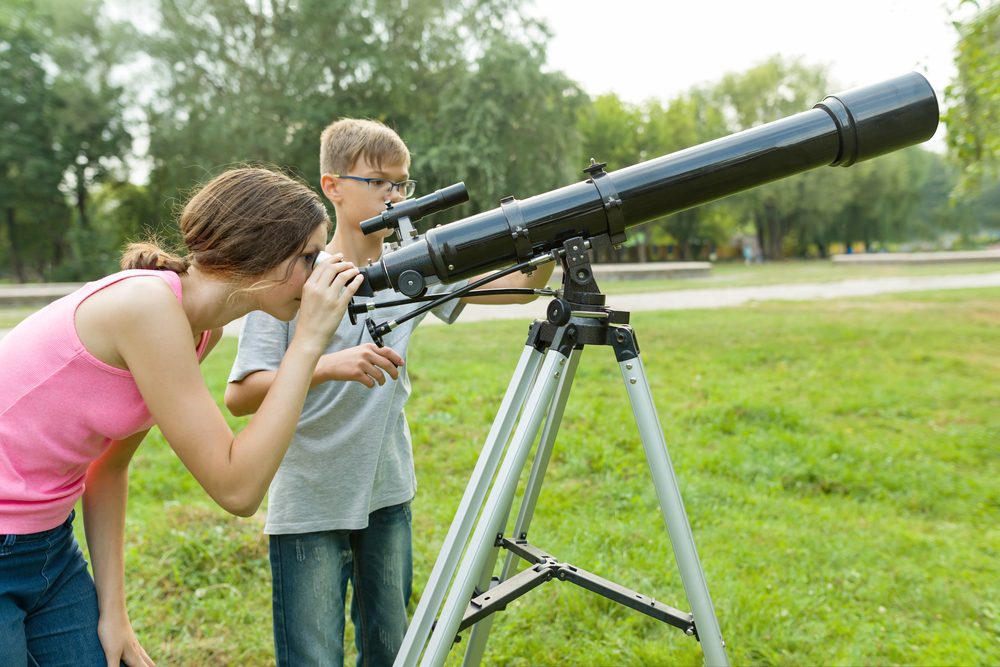Table of Contents:
What is the purpose of a telescope?
Observing celestial bodies is a hobby that you can lose yourself in endlessly. There is something fascinating about the cosmos that makes many people able to spend several hours marvelling at the constellations of stars and studying galactic phenomena such as solar eclipses and stellar conjunctions.

However, because of the enormous distances separating the Earth and the celestial bodies, it is necessary to equip oneself with a suitable optical instrument, which is a telescope. This consists of a number of lenses (a refractor telescope) or specially shaped mirrors (a mirror telescope), whose task is to magnify the image received by the telescope.
As a result, thanks to their ingenious design, hobby telescopes aimed at the amateur astronomy segment are able to achieve approximations of several dozen times, while maintaining a sharp and clear image.
Which telescope to buy and which parameters to pay particular attention to
When looking for an instrument for observing the celestial bodies, you can be overwhelmed by the number of different types of products – some of which are of better quality and others, unfortunately, leave a lot to be desired. So which telescope should you choose?
The first thing to realise is that, paradoxically, a greater degree of approximation does not always provide a better image. This is due to the fact that good quality optics are very expensive, and manufacturers of cheap telescopes have to look for savings somewhere. As a result, equipment which advertises a huge degree of approximation usually strongly distorts the image in the eyepiece, making star gazing very difficult.
The diameter of the telescope’s lens itself may also be a problem. It is the diameter that is responsible for the amount of light let into the optics, which directly affects the quality of the image generated. As a rule, the larger the diameter of the lens, the brighter it becomes, and therefore the more confidently you can observe celestial bodies even in poor lighting conditions.

Therefore, instead of the magnification alone, the decision as to which telescope to choose should be based on the parameter of the focal length of the optical system and the diameter of the lens. It is recommended that even for amateur use the objective lens of a refractor instrument should have a diagonal of at least 70 mm. In the case of somewhat more advanced mirror telescopes, on the other hand, the diameter of the objective lens should be 150 millimetres, or, if the home budget allows it, even more.
Which telescope to start your astronomy adventure with?
Which telescope you choose will depend to a large extent on what it will be used for in the future. In fact, at the very beginning it is difficult to find an economic justification for investing in expensive and professional optical instruments – astronomy as a hobby can quickly become boring and reselling a telescope later can be a bit awkward.

Therefore, for basic observations of celestial bodies, such as the Earth’s Moon or neighbouring planets, a relatively simple refractor telescope will suffice. The cost of such a telescope will not be too great a burden on your budget, but it will allow you to find out whether astronomy really is something you are passionate enough to take seriously.
However, if the object of observation is to be distant nebulae or objects in the Milky Way band, it is worth buying a little better equipment, although in this case the choice of the telescope will depend mainly on your wallet.
The last thing to remember is observing bright objects – especially the Sun. In this case it is necessary to equip your telescope with special filters, which will protect your eyesight from damage caused by too high concentration of light in the eyepiece.
How useful was this post?
Click on a star to rate it!
Average rating 0 / 5. Vote count: 0
No votes so far! Be the first to rate this post.




















